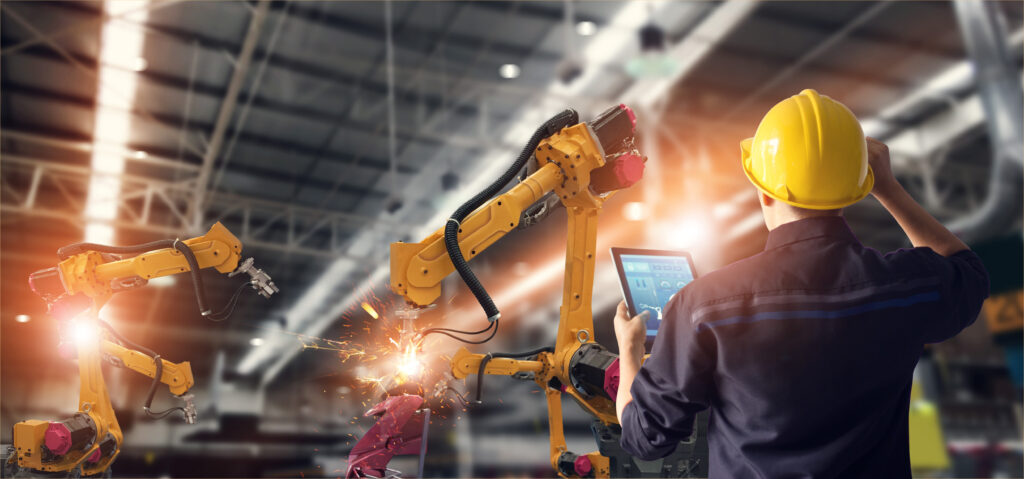Still one of the most current and complete looks at future and emerging tech trends, this year’s Deloitte Tech Trends report has compacted just as much punch in half the usual amount of pages.
In a year loaded with ongoing uncertain climates, finding avenues for trust, flexibility and simplicity are key themes for Deloitte’s 14th edition of the report.
ERP Today speaks to Deloitte’s chief futurist, Mike Bechtel, to answer some of our burning questions on what’s next for enterprises and vendors alike, highlighting the war on talent, digital trust, the metacloud, blockchain and more, but also glimpses through the clouds to enterprise technology’s upcoming silver linings.

On workforce flexibility
Stephanie Ball: No matter the flexibility of your employees – which naturally will come with an upper limit – is it not the case that big businesses would prefer to pay out and get talent faster, rather than begin lengthy in-house training programs?
Mike Bechtel: We talked to nearly 1,000 technology leaders across the globe, and a clear refrain bubbled up: They’re growing weary of the ‘war for talent.’ The treasure hunt for the mythical 10x engineer is time consuming, and if you’re lucky enough to finally find her, you pay a queen’s ransom. Marry that up with our further research finding that the average lifespan of emerging tech is down to 2.5 years, and you have an unattractive proposition: You need a new superhero all over again.
The emerging strategy, as evidenced by organizations like Mercedes Benz, is to hire instead for aptitude, attitude, and curiosity. These folks are like stem cells that can be cultivated into whatever is needed now, and then re-trained into whatever is needed next. In this regard, we get past the old binary of ‘deep specialists’ vs. ‘shallow generalists’ and into a novel third space: ‘Serial Specialists’. People who aspire to be world class at something for 3-5 years, and then at something else entirely after that. It’s about treating employees’ thirst for variety as a feature – as opposed to a bug.
A novel third space – ‘Serial Specialists’ – will treat employees’ thirst for variety as a feature as opposed to a bug.
On trusting technology for governance
SB: The ongoing risks of cybersecurity, privacy, regulations and ethics linger as technology continues to develop. As the rate of tech advancement increases, what are some of the key ways businesses can prepare for what is yet to come and protect trust and true value in these pursuits?
MB: Business outcomes are limited less by technological capability, and more by understanding of, belief in, and willingness to commit to those technologies.
Organizations can create an engineered advantage by investing in the quality and trustworthiness of their technology today. Take AI. We need to be extremely mindful and scrupulous as to the data we feed our algorithms. Intentional efforts to identify and eliminate both tacit and explicit biases in training data, coupled with sufficiently diverse and mindful development teams will go a long way toward promoting bias free outcomes.
The other broad trend here: moving from ‘black boxes’ to ‘glass boxes’. Sure, a deep neural network model might outperform a decision tree model for a given use case, but the latter can ‘show its work’. And that visibility begets auditability and explainability – all critical issues when you’re talking about handing business critical decisions to a mechanical mind.
Big vendors are committed to permitting a minimum viable connectivity into and out of their gardens.
On a metacloud layer
SB: A compatibility layer sitting above the multicloud mess could commoditize the cloud market, but how likely is it that big vendors will want this to come to fruition? Have you heard much from the vendor space on this point – and are we talking self service, or will this more likely all fall onto the shoulders of the software implementation partners to argue out with their specialist vendors?
MB: To explain the demand side of the metacloud equation:
For clients going through enterprise cloud journeys, at first, a lift-and-shift migration to a single cloud provider seemed… unproven, but ultimately savvy. Infrastructure-as-a-service moves soon gave way to platform-as-a-service plays, and then, business-process-as-a-service. And before they knew it, teams had made individually penny-wise cloud investments that, taken together, resulted in multicloud complexity.
The metacloud appears to be an emerging solve. Suites of services that live ‘above the clouds’ aim to provide unified means of observability, operability and configurability.
Our experience is that big vendors, understandably, are committed to permitting a minimum viable connectivity into and out of their gardens. They’re understandably committed to incentivizing folks to maximize – or at least optimize – their time spent on their own platforms.
That said, interoperability is always table-stakes, and the more that leading vendors provide in the way of shared interop, the less demand they’ll end up conceding to third parties who are already seeing and responding to demand for ‘Simplicity-as-a-Service’.
On blockchain and a decentralized web
SB: Blockchain is credited in the report as somewhat of an antidote to digital mistrust, but with the data processing required to maintain blockchain, can larger blockchains be envisaged just yet and can it be considered the answer to an entire decentralized web?
MB: Despite grabby headlines and admitted market volatility surrounding cryptocurrency, the enterprise potential of blockchain and digital assets quietly continues to grow. In a world of eroding trust and a proliferation of misinformation, trustless architectures are an emerging approach to validating data and transactions between counterparties, wherein public blockchains (or blockchain-adjacent technologies) can serve as the system of record.
As these ‘trustless ecosystems’ collectively evolve into Web3, they stand to become a useful means of master data management and business process re-engineering between organizational boundaries. Things that once required JV’s, consortia, or ‘scout’s honor’ can increasingly rely on cryptography.
Mainframes are enjoying a quiet renaissance. Today, enterprises are using middleware to link next-gen capabilitites. Vendors may reconsider their operating models.
On the ‘connect and extend’ trend
SB: Welcoming ‘connect and extend’ is a trend that some businesses have already adopted, opting to keep their legacy systems and simply improve them with additional tools, because the method works for them. What will software vendors and system implementation partners need to consider as this method becomes increasingly popular – will vendors need to change tactics if fewer businesses are ripping and replacing their software?
MB: Once considered a breed bound for extinction, mainframes are enjoying a quiet renaissance. Today, enterprises are using middleware (made more interesting by AI and ML in some cases) to link core systems’ next-generation capabilities. Meanwhile, others are building a new generation of mainframes by another name, in high performance supercomputers powered by graphics processing unit (GPU) architectures.
Together, these two motions represent a recognition that certain classes of problems lend themselves to depth as opposed to breadth, and it’s all breathing new life into legacy systems, extending the trust in and value of their computing power, data stores and functionality. This trend may lead some vendors to reconsider their operating models and offer a more hybrid approach.
On the next innovators
SB: This report comes out against the backdrop of Big Tech redundancies, including in R&D divisions from the likes of FAANG. As such, where will the next tech breakthroughs come from this year? From independent bodies like OpenAI, or even consultancy divisions like Deloitte Ventures?
MB: As a side hustle, I have the privilege of teaching corporate Innovation at the University of Notre Dame. Some (half-jokingly) assert that corporate innovation might as well be an oxymoron. Like jumbo shrimp. I heartily disagree. Our recent Deloitte report, Beyond the Buzzword: Corporate Innovation 2021, surveyed hundreds of corporate innovation leaders and learned that innovation is alive and well across the Global 500.
The big finding, though, is that it is no longer the province of siloed R&D groups. Rather, leading organizations are building venture-like capabilities that fund ‘intrapreneurship’ with milestone-based funding tiers and fail-fast cultures. Now, some of these folks end up building their breakthroughs, and others end up buying them – investing in start-ups to scratch their itch. But the point remains: Innovation is happening in established firms. Just not necessarily in the white-lab-coat realms of years past.
In Web3 we might be able to start re-assigning value to things other than polarizing and attention-grabbing – a reprieve from ‘weapons of mass distraction’.
On the toxicity of the web
SB: From the early days of the internet to the web3 and metaverse future we are headed to, I wonder about your opinion on the changes you’ve seen when it comes to digital trust. The quote about “hatred” from the report is a striking one; how toxic do you think the internet has become in your time, and how at risk are enterprises from digital loss of trust in a frenetic media landscape which forgets things very easily as it jumps onto the Next Big Story?
MB: Web1 was reasonably utopian; a DIY mix of creators ‘spinning’ the web and consumers ‘surfing’ it. Web2 begat a ‘pro-sumer’ dynamic where everyone became a creator, but the monetization still mostly accrued to the platforms ‘serfing’ the web. A by-product of this dynamic has been ‘attention economics’, where information approaches infinity, attention approaches zero, and in turn, the ‘latest and loudest’ tends to get the eyeballs. The result is an outrage economy where factionalism and rage stir up the most clicks and cash.
One of the interesting, less talked about, possibilities in Web3 is the idea that, thanks to emerging concepts like digital scarcity and tokenization, we might be able to start re-assigning value to things other than just the most polarizing and attention-grabbing. An emerging market for moderation in everything from entertainment to civil to political discourse would be quite a reprieve from the last 15 years of ‘weapons of mass distraction’.
Read the Deloitte Tech Trends 2023 report in full here.




